SLLA613 august 2023 TUSB1146
3 Test Results
The following data in this section is produced following all the procedures outlined in this document. See EQ Configuration for the EQ settings used in these tests. For graphic purposes, a BER of 1E-12 constitutes no bit errors over the 1E13 bit recording period.
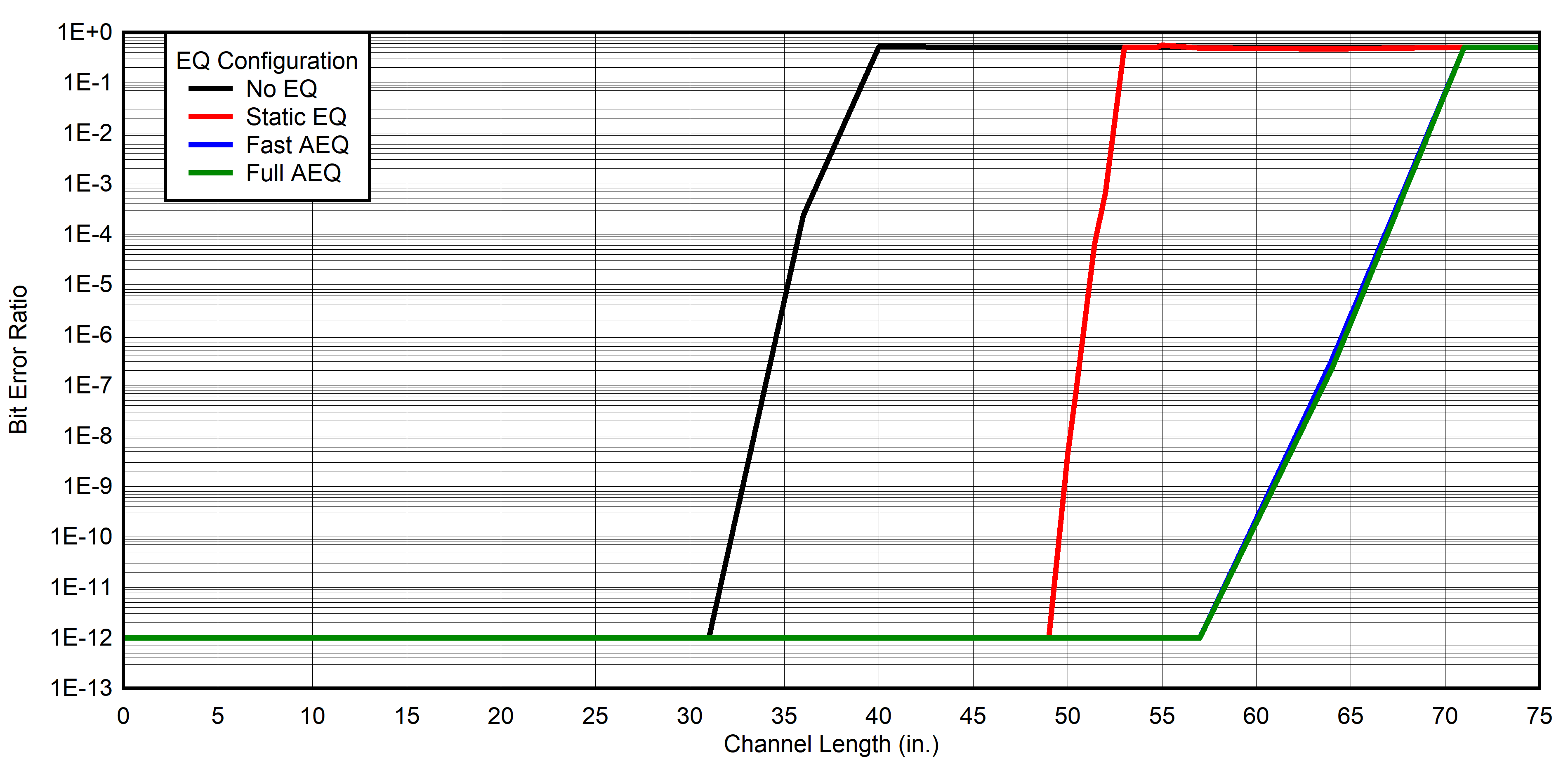 Figure 3-1 BER Test With Clean
Signal
Figure 3-1 BER Test With Clean
SignalAs shown in Figure 3-1, a redriver is required for channel lengths longer than 30 inches. For channel lengths less than 30 inches, the test setup produces low BER without equalization because the BERT outputs a low jitter, 10 Gbps clean pattern signal. As the channel length increases further, the redriver is required to compensate the additional ISI. Both Fast and Full AEQ can adapt to higher EQ settings, resulting in lower BER for more channel lengths than static EQ. In this case, it is possible to choose a much higher EQ setting for static EQ to ensure more channels operate without error. However, static EQ then over-equalizes short channels, with the consequences seen in Figure 3-2 and Table 3-1.
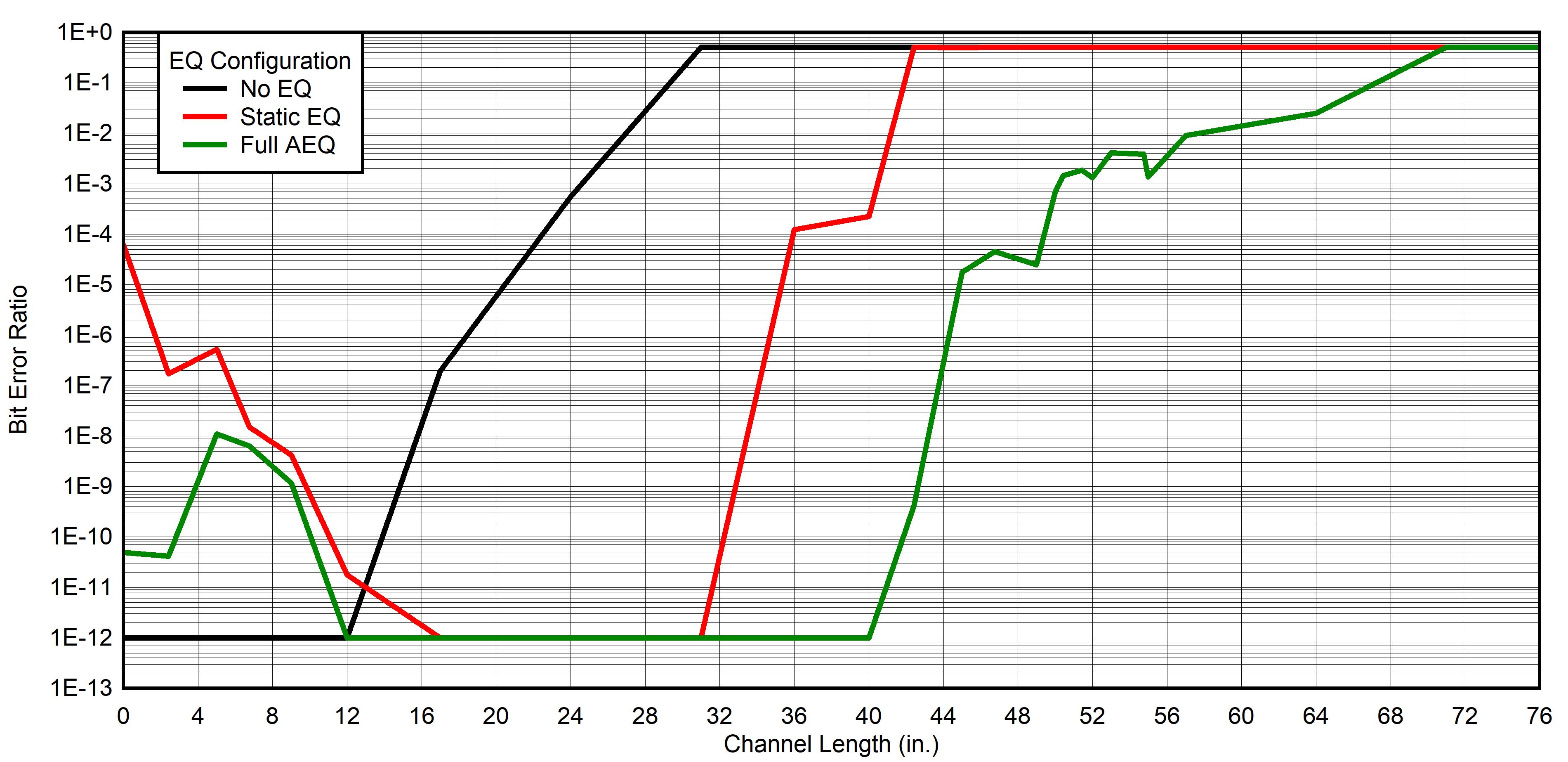 Figure 3-2 BER Test With JTOL Stressed
Eye
Figure 3-2 BER Test With JTOL Stressed
EyeStatic EQ over-equalizes in the JTOL test in Figure 3-2. Over-equalization occurs when too much EQ is applied for the given ISI in a channel, causing jitter effects present in the channel to be amplified. Over-equalization produces the results seen in Figure 3-2, where static EQ has a high BER for the short channel due to over-equalization, as well as having a high BER in the long channel for under-equalization. The Full AEQ out-performs static EQ for the entire JTOL test. Fast AEQ is not included in this test as the chosen settings in EQ Configuration greatly over-equalizes, similar to static EQ.
| Test Description | Eye Diagram | Comments |
|---|---|---|
| 24-inch channel, EQ setting 15, clean signal | 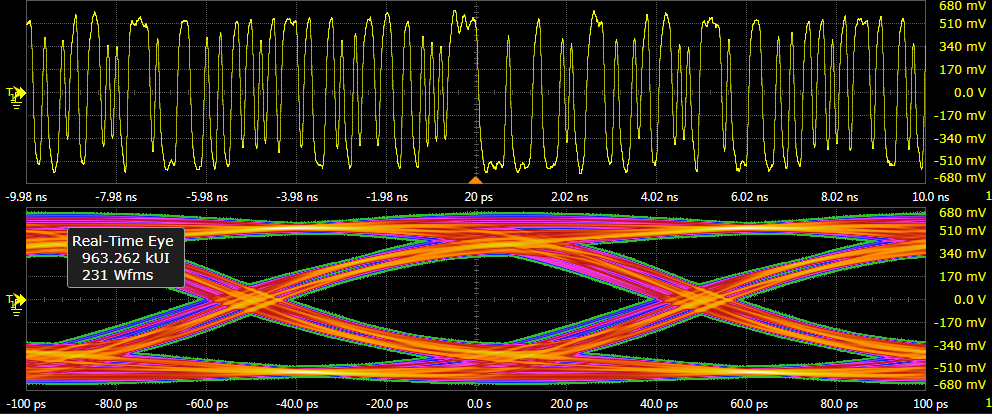 | Eye is slightly over-equalized, but the amplified jitter barely reduces eye width. |
| 2.54-inch channel, No redriver, 550 mUI BUJ stressed eye | 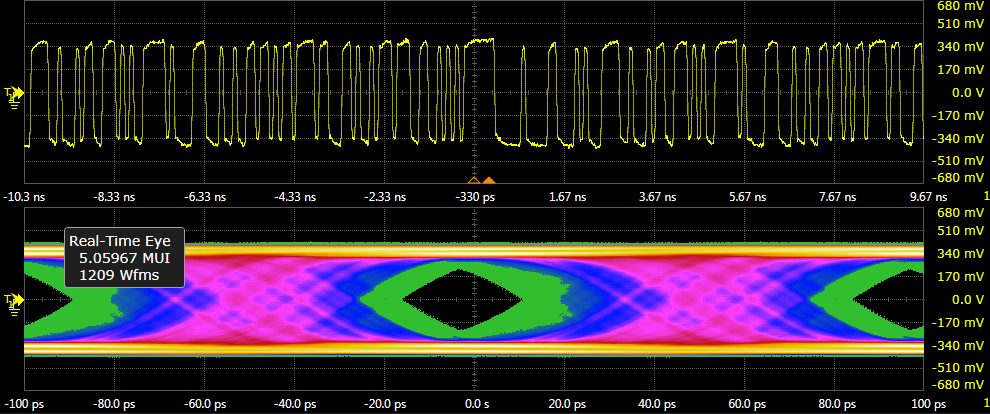 | Eye has little ISI reducing the height, just the jitter added to the test reduces width. |
| 2.54-inch channel, EQ setting 4, 550 mUI BUJ stressed eye | 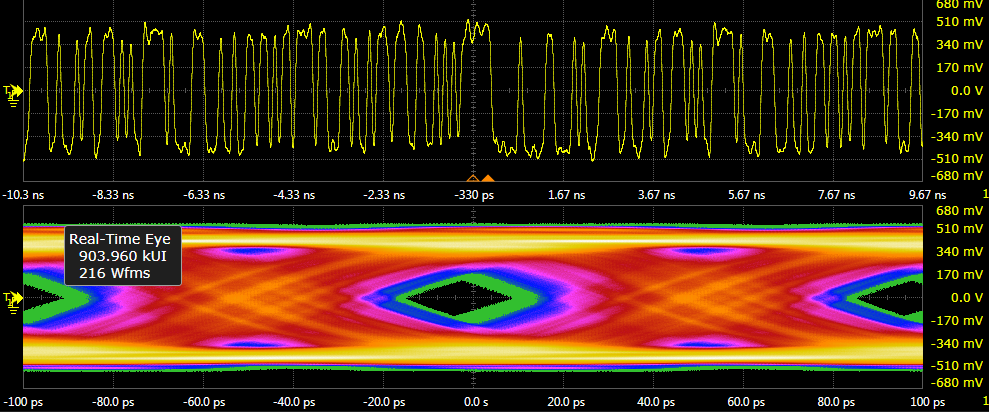 | Eye height and width significantly reduced from the no redriver test due to over-equalization. |
| 2.54-inch channel, EQ setting 15, 550 mUI BUJ stressed eye | 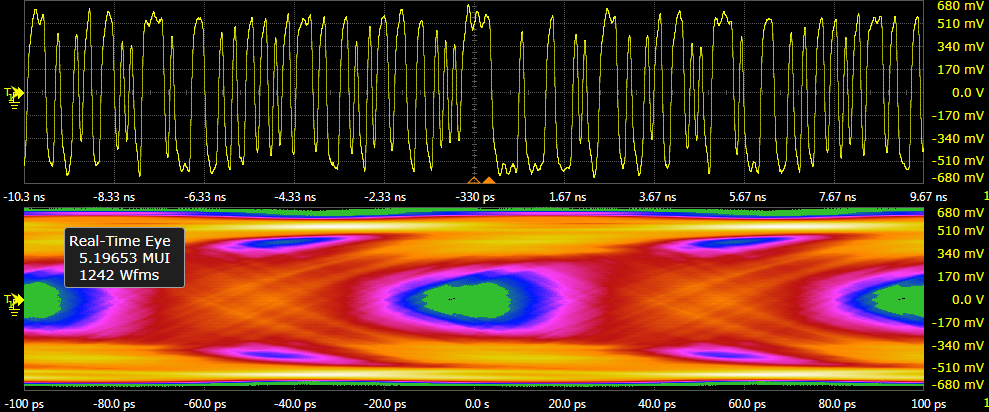 | Eye height and width entirely reduced due to the excess over-equalization. |
Table 3-1 shows that while over-equalization is inconsequential to the eye in ideal system conditions, over-equalization quickly becomes an issue in high interference conditions. Table 3-1 visualizes what happens to static EQ versus Full AEQ in Figure 3-2 as Full AEQ chooses a lower EQ value. Despite this equalization, all EQ configurations experience difficulty due to limitations of the redriver in compensating for jitter.
| Test Description | Eye Diagram | Comments |
|---|---|---|
| 52-inch channel, no redriver, clean signal | 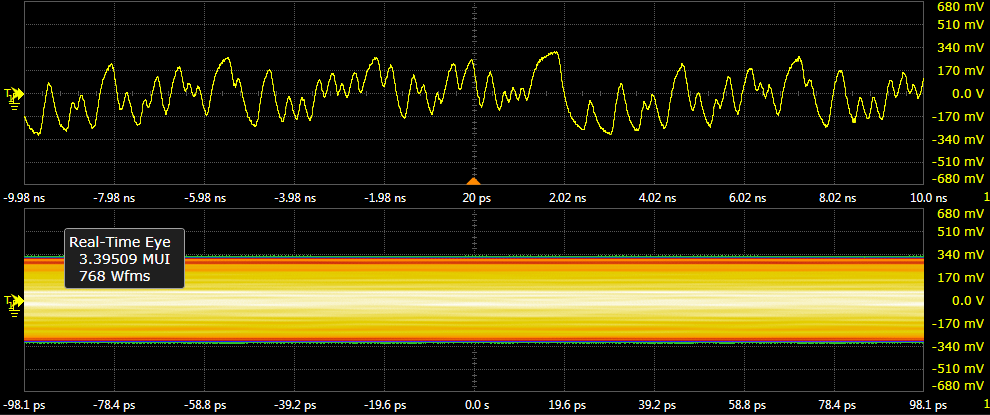 | No eye present due to ISI making transient signal impossible for oscilloscope to lock onto. |
| 52-inch channel, EQ setting 8, clean signal, static EQ value | 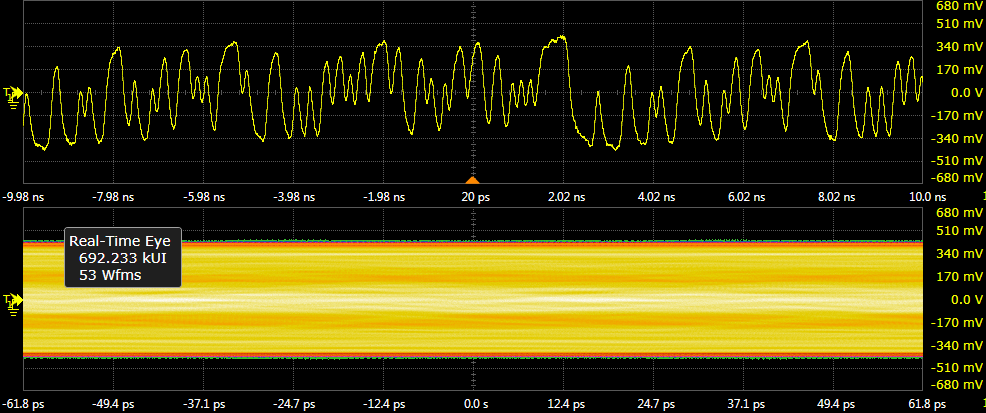 | EQ setting is not high enough, same situation as before. |
| 52-inch channel, EQ setting 15, clean signal, AEQ value | 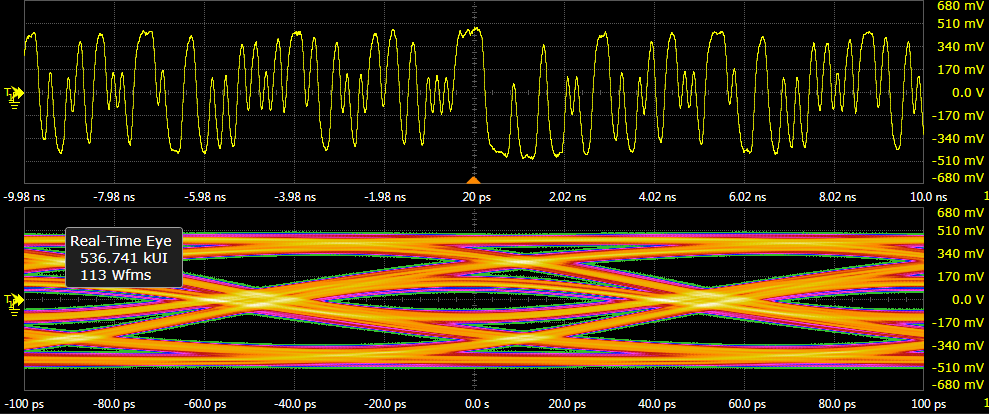 | EQ setting is high enough to recover eye and achieve full signal integrity. |
Table 3-2 shows what occurs in Figure 3-1 at 52-inch channel length. Static EQ becomes inadequate in the long channels unless configured for the channel length, while AEQ can equalize all channel lengths within the limitations of the TUSB1146.
The following results are outputs from performing the Alternative Test, as detailed in Alternative Test Description.
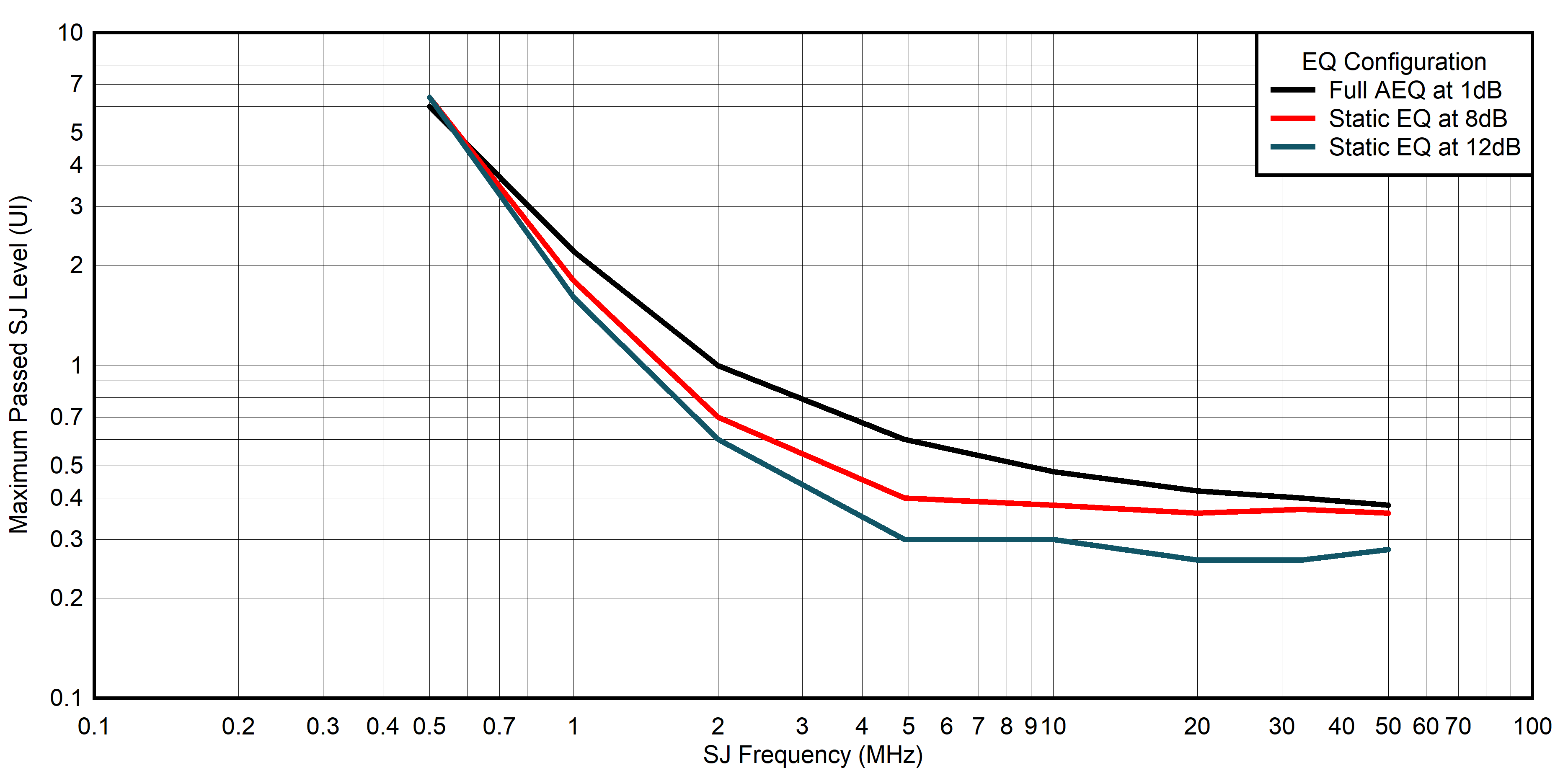 Figure 3-3 Alternative BER Test in Short
Channel
Figure 3-3 Alternative BER Test in Short
ChannelFigure 3-3 shows the results of progressively increasing jitter in a 2.54-inch channel. These results are consistent with the previous tests, as static EQ over-equalizes and significantly decreases the jitter tolerance of the channel.
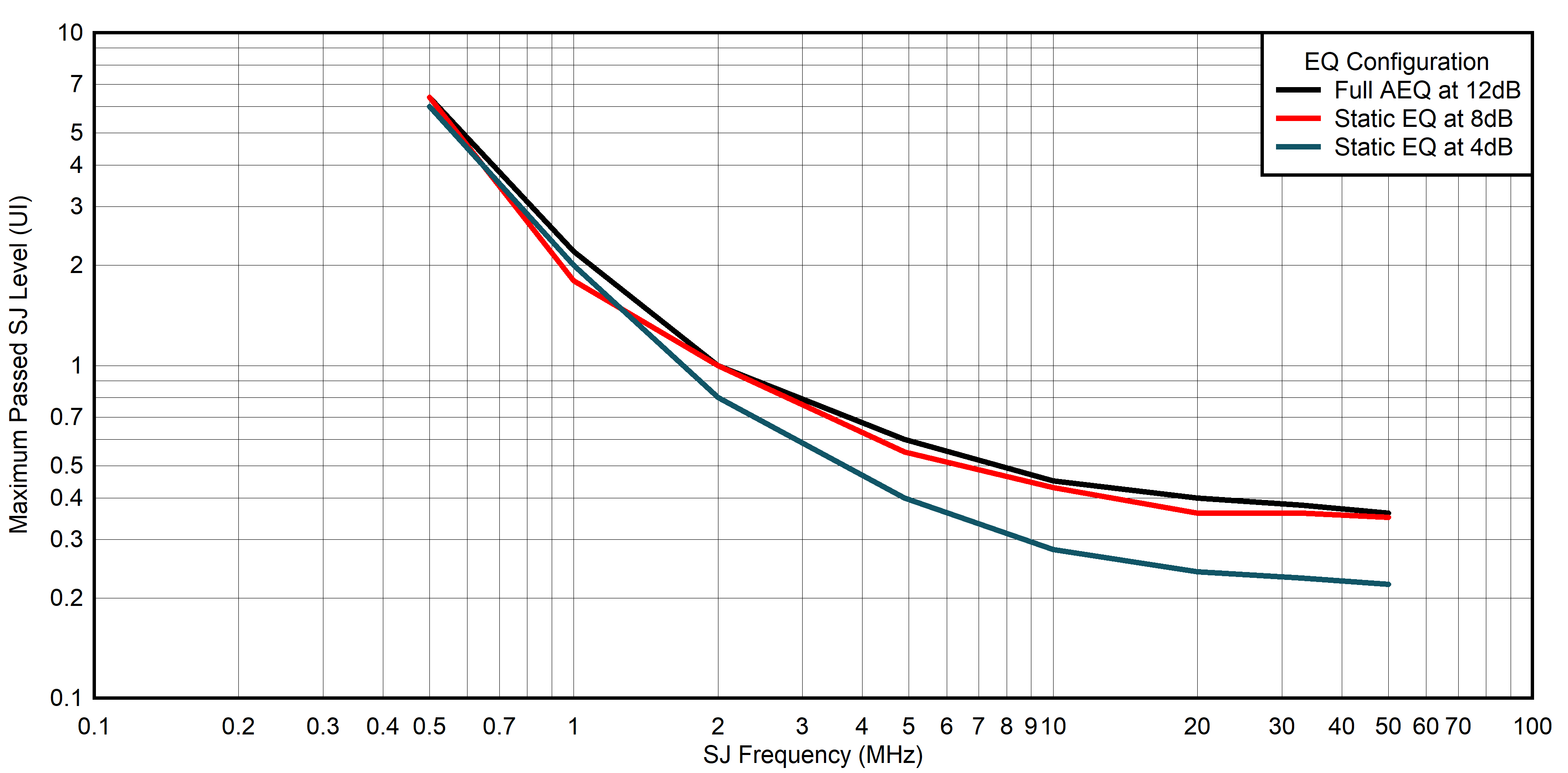 Figure 3-4 Alternative BER Test in Long
Channel
Figure 3-4 Alternative BER Test in Long
ChannelFigure 3-4 shows the results of progressively increasing jitter in a 60-inch channel. These results are consistent with previous tests, as static EQ under-equalizes and decreases the jitter tolerance of the channel. Combining the results of Figure 3-3 and Figure 3-4 shows that AEQ out-performs static EQ on the short and long channel end, as the shared 8-dB static EQ setting is out-performed by AEQ in both instances. Fast AEQ is not included in this test as the chosen settings match the effectiveness of Full AEQ.